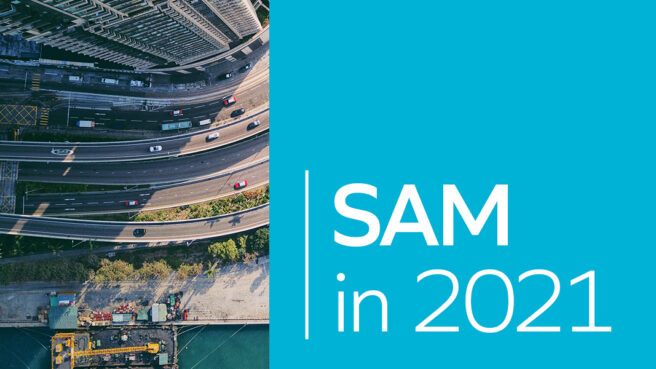SAM in 2021: Data Elements You Should Be Tracking for Software Licenses

To rein in software spend and minimize costly compliance failures, comprehensive visibility over your software estate is key. While spreadsheets may be a good starting point for tracking all your software data, they don’t allow for collaboration and there is a limit to how far they can scale.
Instead, a software tool will more effectively shed light on your current software usage, who has access, for how long and at what cost. It’s the foundation of a robust software asset manager (SAM) program and an integral component of gaining true technology intelligence. But deciding how to begin importing your data into a software tool can seem like a very big project for even the most savvy SAMs.
Earlier in the year, in our SAM in 2021 series, we discussed beginning this process with an import of your software agreements. This way, you have insight into your agreements and when they come up for renewal. For this, we outlined key data elements to track for software agreements. But now, we’re going to explore taking the next step.
Start with baseline entitlements
Once you have agreement data imported, the next step is to load entitlement data. Instead of loading all the past purchases individually, it is a SAM best practice to create a publisher baseline by consolidating all purchases for like products into a single entitlement. This will help identify what you own, and the terms and conditions of those licenses.
To create your software baseline license information, you can follow the same thought process you used for software agreements. Begin by importing data from your top 5 software publishers (maybe it’s your top 20 — whatever you have) and consider this your starting point, or your baseline. Typical data elements selected as baseline imports include the following fields:
License data elements to import
- Software application name or manufacturer SKU
- Purchase date
- Legal organization that contractually owns the license
- License metric
- Quantity owned
- License subscription (Yes/No)
- Subscription begin and end dates
- Downgrade rights (Yes/No)
- Upgrade rights (Yes/No)
- Maintenance begin and end dates
- Agreement number
Once this information has been imported into your software tool, you already have foundational insight into what you are contracted for which may then be compared to your actual usage. The data provides an initial compliance position so you have a starting point to help determine next steps. Are you over-compliant? Maybe there’s an opportunity to negotiate with the publisher and take advantage of other software products? Are you under-compliant? Maybe entitlements are missing or there are re-harvest opportunities instead of having to purchase additional licenses?
Build out your baseline
Once you have your baseline data, you can work on building out your knowledge base further with additional licensing elements. License data elements available for import but not typically included in a baseline import are:
- License purchase price
- Purchase order reference
- Maintenance/support cost
- Maintenance/support invoice
- Cross edition rights
- Vendor/reseller name
- Notes
- Serial number/license key
Many of these data fields fall outside of the baseline effort because often, the data simply isn’t available at the time of initial import. Take purchase price for example. If someone entered into a software agreement years ago, the initial purchase price may not have been documented. Backing your way into cost can be done with maintenance costs but again, this information comes with time.
This is one of the many benefits of relying on a software tool for tracking your technology use, rather than relying on manual spreadsheets. Software helps you track who is using it today instead of who bought it, when (years ago) and under what purchase number. Today’s usage insight is more actionable — it gives you complete visibility so that you can optimize costs and reduce risk.
Importing data into a software tool can feel like an overwhelming task at the start. Set realistic expectations with executive leadership and convey that the population of the SAM tool should be a marathon and not a sprint.
Once you start though, with the ongoing support of SAM tools such as Snow License Manager, you can be light years ahead of where you are today.
This is the ninth post in a series of articles on SAM. Read our previous posts for insights on SAM implementation, how-tos and more.